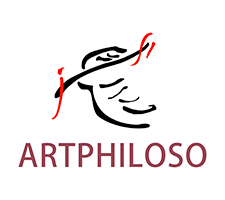The Granularity of the "Body"
Roland Barthes proposed a vivid concept called "the grain of the voice," which represents the irreducible subjectivity and uniqueness of an individual, constituting their true identity. Philoso through his artistic practice, interprets the "granularity of the body." In his works, every "body" is meticulously rendered while maintaining distinctions from others. The depiction of facial features in Philoso’s works exhibits ambiguity and similarity, yet the postures and movements of the bodies are strikingly diverse. Though the "face" is part of the body, it carries a certain deceptive quality. The "body," however, cannot conceal its authenticity. Each false presentation of the face exerts a significant impact on the body. While the face may shield itself from the constraints of reality, the body cannot evade reality’s shaping forces. We might as well term the dynamic transformations of bodies in Philoso’s works the "rhythm of the body."
The "bodies" in Philoso’s works consistently capture transient gestures, reflecting the connection between the "body" and the "here and now." As a medium for our communication with the world, the body possesses its own temporal and spatial structures. Rather than claiming that we communicate with the world, it would be more accurate to say that the body communicates with the world. Our subjective individuality is inherent within the body. Yet every manifestation and expression of the "body" stems from our encounters and reunions with the "Other." Strictly speaking, each presentation of the "body" constitutes a historical construction, for what painting evokes always precedes its explicit content. Once the content of a painting takes form, it transcends the historical impulses that inspired it, reintroducing these elements into the viewer’s perspective to achieve new metamorphoses. The body exists in the "here and now," while the "soul" remains perpetually en route—without origin or destination. Evidently, in Philoso’s works, the eyes no longer serve as windows to the soul; instead, the body becomes the gateway to the soul.
As part of the post-95 generation, these artists prioritize the capacity for action over adherence to visible realities. Philoso translates this generational ethos into the very structure of his "bodies"—bodies in constant motion, forever open, forever striving.
Li Pei
June 2019
